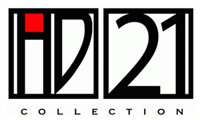Product Description
Peter Shire Memphis Group California Art Pottery Rare Early “Peach Tea Set” 1980


PETER SHIRE (b. 1947) USA
Rare and early “California Peach” teaset 1980
Handmade earthenware with polychrome glazes
Made by Shire at his studio in Echo Park, California
Signed: Shire 1980 EXP (painted on base of each)
Model illustrated: Tempest in a Teapot, the Ceramic Art of Peter Shire, Norman M. Klein et al. (New York: Rizzoli, 1991) p. 11.
Teapot H: 10” x W: 11 1/4” x D: 5 1/2”
Pair of teacups H: 7 3/4” & 8”
Price: $8,500
Peter Shire (born 1947) is a Los Angeles artist. Shire was born in the Echo Park district of Los Angeles, where he currently lives and works. His sculpture, furniture and ceramics have been exhibited in the United States, Italy, France, Japan and Poland; Shire has been associated with the Memphis Group of designers, has worked on the Design Team for the XXIII Olympiad with the American Institute of Architects, and has designed public sculptures in Los Angeles and other California cities. Shire has been honored by awards for his contribution to the cultural life of the City of Los Angeles.
Peter Shire Memphis Group California Art Pottery Rare Early “Peach Tea Set” 1980
FONTANA ARTE Milan, Italy
“Glass fruit” bookends c. 1950
Glass, chromium-plated brass
For more information see: Fontana Arte, Una storia Trasparente, Laura Falconi (Milan: Skira, 1998).
H: 5” x W: 3 3/8” x D: 5”
Price: $3,500
GUSTAVO PEREZ Mexico
Stoneware vase 2000
Black, randomly positioned rectangles on a cream / sandy base with a pinned overlap detail
Signed: GP 2000-68
H: 9 1/4″ x D: 6 1/2″
Price: $5,500
Gustavo Pérez makes vessels that are simple, smooth and symmetrical. Their elegance is due to the precision of the incised lines and other markings on the pots. While using the same clay body—sand colored stoneware—throughout his work, the artist achieves a wide range of form and pattern and includes slowly undulating walls beneath the subtly incised surfaces.
Gustavo Pérez works are incessantly experimental. There have been parallel lines, calligraphic traces, geometric cuts into the surface, minimalist vessels, recollections of pre-Hispanic vases and references to other ancient cultures.
The ceramics of Gustavo Pérez are distinguished by eliminating superfluous details, by synthesis of his elements. During the past two decades he has created a visual language that seems closely aligned with music. Pure in form, with a significant structure, completely abstract and without specific associations, his language of line, the bending of forms, and the definition of the vessel mark his work as a distinctive voice. The form is not just a container or a receptacle; it is architecture.
